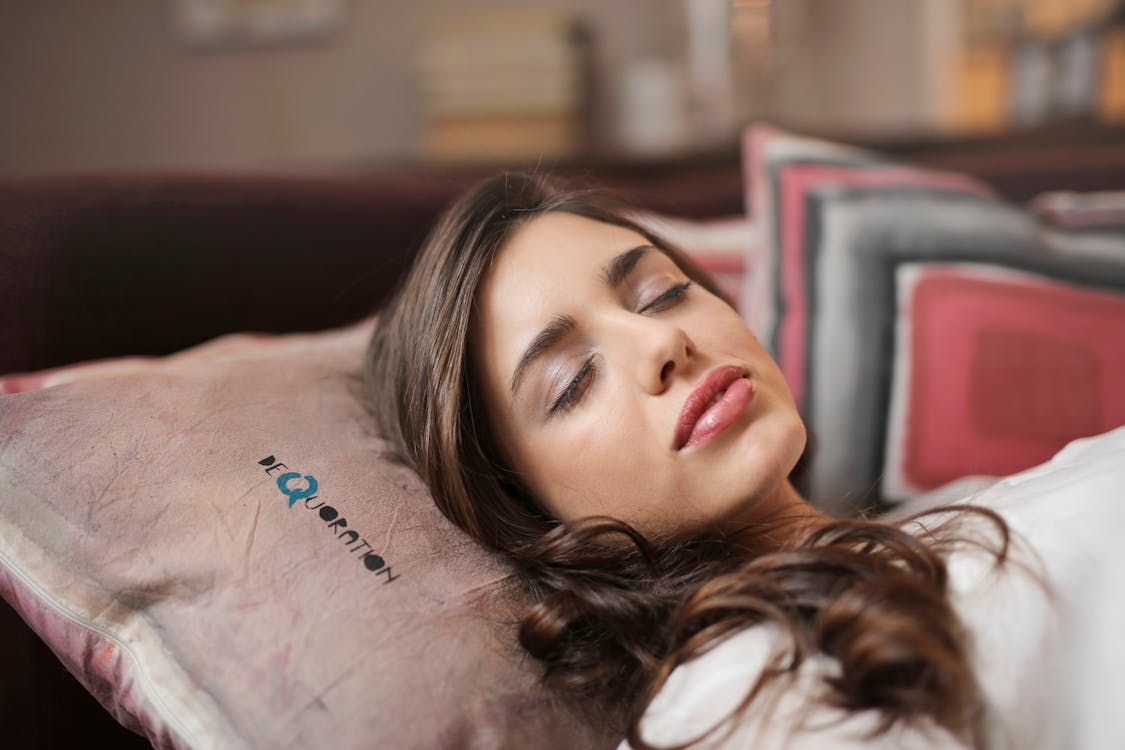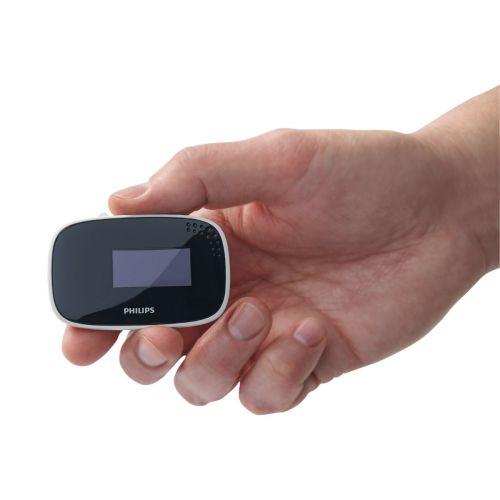While there have been many improvements made to CPAP therapy over the years, there is no denying that many individuals still struggle to adapt to wearing a CPAP mask at night. Even with the wide range of immediate and long-term health and wellness benefits to sleep apnea therapy compliance, feelings of claustrophobia or trouble adapting to the flow of air can cause many to give up on their treatment.
Giving up on CPAP therapy can have significant long-term consequences. From near-constant feelings of fatigue to an increased risk of heart attack, stroke, or type 2 diabetes, uncontrolled sleep apnea is a serious concern.
So what can you do if standard CPAP or BiPAP therapy isn’t working for you? While not suited for every person who struggles with sleep apnea, the Philips NightBalance presents an exciting alternative to wearing a CPAP mask at night.
What is Positional Sleep Apnea?
 To first understand the value provided by the Philips NightBalance, it is important to understand positional sleep apnea — the type of obstructive sleep apnea that this device is designed to address.
To first understand the value provided by the Philips NightBalance, it is important to understand positional sleep apnea — the type of obstructive sleep apnea that this device is designed to address.
In many individuals, the position they sleep in has a direct affect on the number of sleep apnea incidents they experience during the night (commonly referred to as AHI, or apnea-hypopnea index). An individual is labelled as having positional obstructive sleep apnea if there is a 50 percent or greater reduction in their AHI level when sleeping on their side, rather than on their back.
Sleeping on the back (or in the “supine” position) has been found to increase AHI for individuals with mild to moderate obstructive sleep apnea. It is believed that this is caused because of the way the jaw and throat muscles relax while sleeping in this position, and that gravity’s influence can also narrow the airways.
Positional obstructive sleep apnea is surprisingly common. A 2005 study conducted at two sleep centers in Buffalo, New York found that sleep position was a contributing factor in 49.5 percent of patients with mild sleep apnea, and 19.4 percent of individuals with moderate sleep apnea. Other studies have determined that for 56 to 75 percent of all individuals with obstructive sleep apnea, “the frequency and duration of apneas are influenced by body position.”
In some individuals, their obstructive sleep apnea is almost entirely related to their sleeping position.
Recent research has also found some connections between sleeping on one’s back and central sleep apnea.
According to a case study published in the Journal of Clinical Sleep Medicine, “Sleeping in the supine position reduces cardiac output and increases venous return. Decreased cardiac output delays the transfer of blood gas information from the pulmonary capillary bed to the chemoreceptors and can lead to sustained fluctuations in respiratory output (i.e., central sleep apnea)…An increase in venous return could additionally exacerbate both diastolic and systolic dysfunction. This could result in an inability to reduce ventilation with carbon dioxide levels remaining near the central apnea threshold.”
The best way to determine whether you experience positional sleep apnea is by undergoing a sleep study. Sleep position is clearly a major contributing factor for many individuals who experience sleep apnea, and a standard CPAP device does not address this underlying concern. While delivering a steady flow of air can help keep the airways open, addressing an individual’s sleeping position could very easily keep apnea events from being an issue in the first place.
This is where the Philips NightBalance comes in.
What is the Philips NightBalance?

The Philips NightBalance is not a CPAP machine. Instead, it serves as an alternative method of managing your sleep apnea without the need for a mask or bulky machine.
The Philips NightBalance is comprised of three primary components. First is the chest strap. This soft and adjustable strap is wrapped around your chest before going to bed. The strap has a small pocket where users insert the sensor device. Wearing the strap ensures that the sensor device will remain in place during the night and be able to detect your sleep position.
The sensor device is the most noteworthy component of the Philips NightBalance system. This small, lightweight device is tucked into the chest strap with the screen facing outward. The sensor is small enough to fit into the palm of your hand and weighs a mere 1.1 ounces, meaning you will hardly notice it when tucked into your chest strap.
The sensor device remains active throughout the night, focused on detecting your sleep position. The Philips NightBalance is meant to help you sleep on your side. When it detects that you have shifted to your back, it will deliver a gentle series of vibrations that will cause you roll onto your side — without waking up.
The Philips NightBalance determines the appropriate level of vibration to deliver thanks to a nine-night adjustment program. During the first two nights that you use the device, it simply monitors your sleep, without making any attempt to adjust your sleeping position. This allows it to “learn” how often you sleep on your back and evaluate your therapy needs.
Over the following nights (through night nine), the device will gradually introduce vibrations as needed to help your body get used to this unique type of therapy. The intensity and frequency of the vibrations will gradually increase until the tenth night, when the device will enter its full treatment mode.
Similar to many CPAP devices, the Philips NightBalance gives you time to fall asleep before activating its therapy mode. The device begins its monitoring 15 minutes after you go to sleep, and will emit vibrations any time you shift to your back. The vibrations continue until you switch to your side.
Better still, the device connects with your smartphone via the Philips NightBalance app. Pairing your NightBalance with your phone will allow you to view your sleep data so you can get a better understanding of your sleep habits and how your therapy is working.
The Philips NightBalance also comes with a docking station, which is used to charge the sensor device. To ensure that you have enough battery power in the sensor device to last through the night, it is recommended that you place it in the docking station each morning. The docking station itself is also quite compact, ensuring that it will fit easily onto your nightstand.
The Philips NightBalance’s compact size makes it perfectly suited for travel, and this is complemented by the inclusion of a convenient travel case. This protective case features snug compartments for each component of the Philips NightBalance system, including the docking station’s power cord. The Philips NightBalance is FAA approved (though not for in-flight use), meaning you can take it with you wherever you go.
Most importantly, however, is the fact that studies have found this alternative treatment method to be equally effective in comparison to CPAP therapy for those with mild to moderate positional sleep apnea. If you have been diagnosed with positional sleep apnea and don’t like the idea of wearing a mask, this can be an extremely effective alternative.
Addressing Other Sleep Apnea Causes
 The Philips NightBalance is ideally suited for addressing positional sleep apnea. It can be used alone, or in conjunction with a standard CPAP or BiPAP device to help manage your condition. However, this also means that it isn’t necessarily the best solution when sleep apnea is the result of other underlying conditions.
The Philips NightBalance is ideally suited for addressing positional sleep apnea. It can be used alone, or in conjunction with a standard CPAP or BiPAP device to help manage your condition. However, this also means that it isn’t necessarily the best solution when sleep apnea is the result of other underlying conditions.
Quite simply, the Philips NightBalance is not designed to address sleep apnea that occurs as the result of issues other than sleep position. If positional sleep apnea only partially contributes to your position, the Philips NightBalance will help reduce AHI, but it won’t completely mitigate your sleep apnea episodes.
For example, being overweight or obese is a common factor behind sleep apnea. While many of these individuals can reduce their AHI by using a positional therapy device, it likely won’t be enough on its own to fully mitigate sleep apnea episodes.
In this example, the person in question would likely still need to use a CPAP device to keep their breathing passages open through the night. Improvements to diet and implementing a consistent exercise routine could also be helpful, as losing excess weight can help mitigate this condition.
Individuals who smoke, consume alcohol, or use sedatives or tranquilizers are also more likely to develop obstructive sleep apnea because of the way these substances impact the airways. Reducing the consumption of such substances could subsequently reduce the impact of sleep apnea.
Ultimately, the best way to address your sleep apnea is by consulting with a medical professional. While there isn’t a “cure” for sleep apnea, working with your doctor can help you determine which lifestyle changes and therapy options will be best for helping you manage your condition. Undergoing a sleep study can also help determine whether you would benefit the most from the Philips NightBalance, a traditional CPAP device, or a combination of the two.
Adapting to the Philips NightBalance
 Wearing the Philips NightBalance may be much easier to adapt to than wearing a CPAP mask, but there are still a few things users should be mindful of as they begin using this device. A few basic maintenance tasks will help you continue to get the most from your Philips NightBalance.
Wearing the Philips NightBalance may be much easier to adapt to than wearing a CPAP mask, but there are still a few things users should be mindful of as they begin using this device. A few basic maintenance tasks will help you continue to get the most from your Philips NightBalance.
The sensor device and docking station do not require any service or part replacements during their lifespan, though it is recommended that users keep these components free of dust. These devices should be cleaned regularly with a damp cloth. Noticeable markings can be cleaned using a mild detergent solution, but bleach should never be used. Be sure to unplug the docking station prior to cleaning.
Because the chest strap is worn directly against the skin, it is a good idea to wash it once a week (or more frequently, if needed). The chest strap can be placed in the washing machine as part of a normal load of laundry. However, it should only be washed using a mild detergent. Fabric softeners and products containing chlorine bleach should not be used.
After washing, the chest strap should be air dried, rather than being ironed or placed in the dryer. Make sure the chest strap is dry before inserting the sensor device.
If you have a tendency to wake up and get out of bed at night (such as to go to the bathroom), you won’t have to worry about this causing issues with your therapy. The Philips NightBalance can be paused for five minute intervals, and will automatically re-enter therapy mode afterwards.
In addition, the sensor device and docking station are both backed by a two-year warranty. If you experience material or operational defects that aren’t the result of incorrect use, improper storage, or any alterations, your device can be repaired or replaced under warranty.
Overall, these minor concerns make integrating the Philips NightBalance into your nightly routine surprisingly easy — especially if you are already used to the more rigorous requirements of caring for a CPAP machine. With proper use and care, the Philips NightBalance will help you achieve improved sleep quality for years to come.
Parting Thoughts
While the Philips NightBalance may not be suitable for everyone who suffers from obstructive sleep apnea, there is no denying that it can make a significant difference for those whose condition is partly related to their sleep position.
Whether you use the device on its own or in conjunction with standard CPAP equipment, the Philips NightBalance can dramatically improve the quality of your sleep by helping reduce the number of sleep apnea incidents you experience during the night.
Of course, as exciting as this innovative equipment is, it and other CPAP supplies can often be quite expensive — particularly if you don’t have health insurance or your policy doesn’t fully cover the cost of your equipment.
This is where Help Medical Supplies steps in to help. We offer great discounts off MSRP for the Philips NightBalance and many other pieces of CPAP equipment and accessories, while also providing free shipping on all orders over $89. This helps you keep more money in your pocket as you address your ongoing needs.
We can also help make equipment more affordable through available financing with CareCredit. Qualifying purchases of $500 or more can be financed so that you make affordable monthly payments, rather than paying in full up front. If you pay off your equipment in full within six months of your purchase, you won’t pay any interest.
If you think you might be suffering from sleep apnea, consult with a medical professional to confirm your diagnosis and get a prescription. Then, buy through Help Medical Supplies and save! Improved sleep quality isn’t as far off as you might think.

